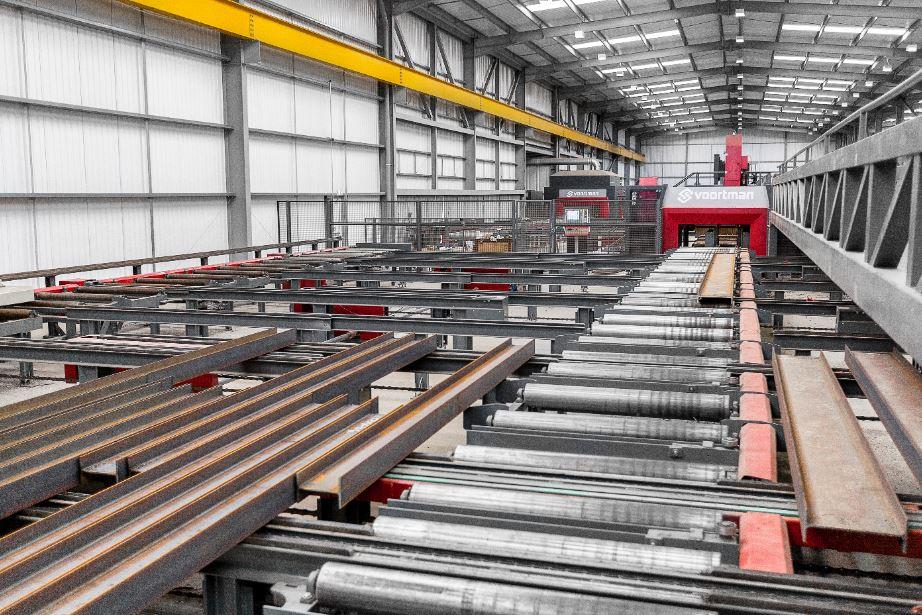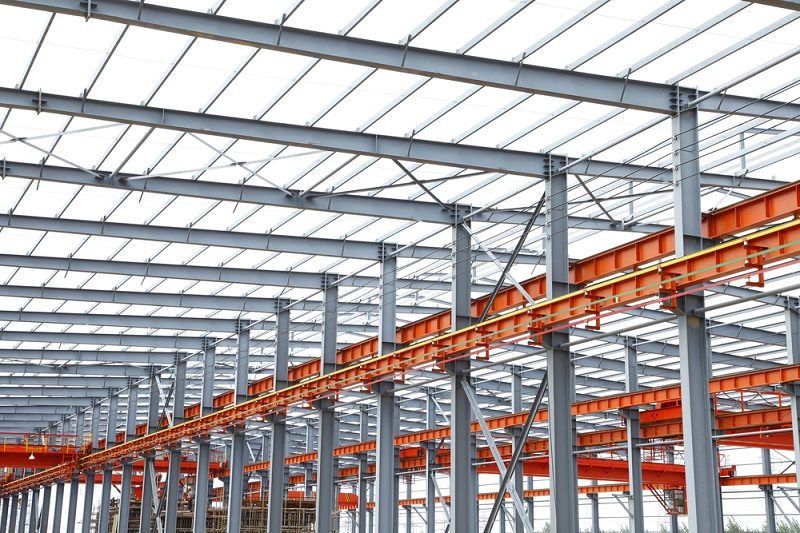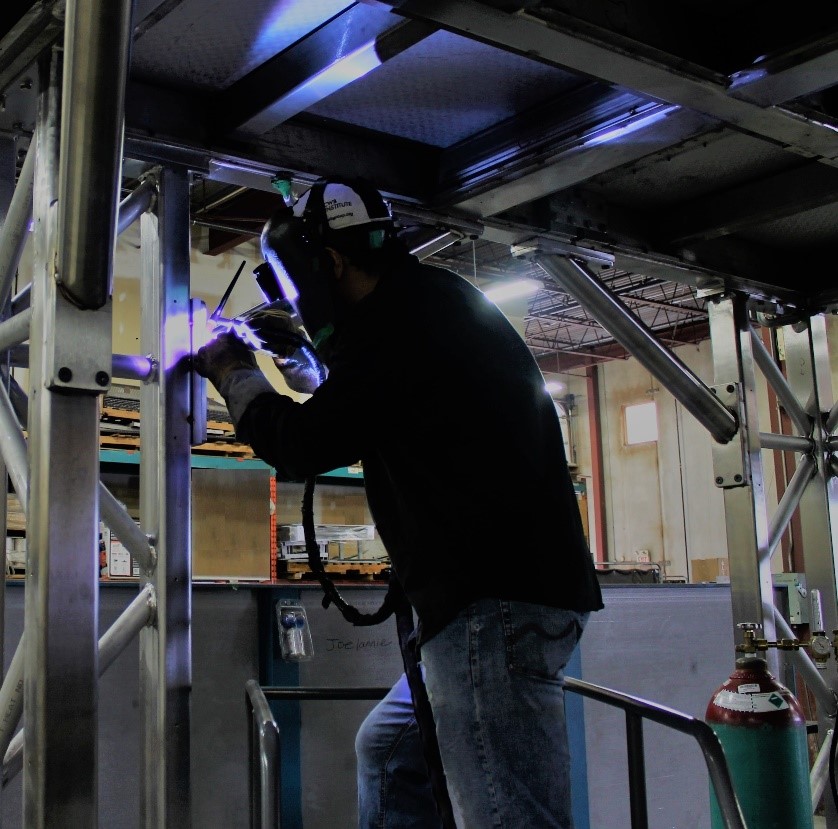Steel Fabrication Melbourne: Craftsmanship Fulfills Technology
Steel Fabrication Melbourne: Craftsmanship Fulfills Technology
Blog Article
Innovative Trends in Steel Manufacture: Enhancing Toughness and Accuracy
In the world of steel construction, the search of sturdiness and accuracy has actually resulted in a wave of cutting-edge fads that are reshaping the sector. From innovations in welding technologies to the assimilation of robotic automation in fabrication procedures, the landscape of steel production is developing quickly. High-strength alloy development, paired with the utilization of 3D modeling and simulation software application, is pushing the boundaries of what is achievable in terms of architectural stability and precision. The expanding focus on lasting techniques in steel production is not just driving efficiency yet likewise fostering a much more ecologically conscious approach to fabrication. These patterns are not simply shaping the existing but likewise laying the groundwork for the future of steel fabrication, guaranteeing additional enhancements in sturdiness and accuracy.
Advanced Welding Technologies
In the world of steel fabrication, the adoption of advanced welding innovations has considerably changed the market's strategy to accomplishing exceptional quality and accuracy in architectural welds. Advanced welding technologies, such as laser beam welding and rubbing stir welding, have actually become game-changers in the field. Laser light beam welding employs a concentrated laser beam of light to sign up with steel components with impressive accuracy and rate, making it optimal for complex styles and slim materials. On the other hand, friction mix welding produces incredibly solid bonds by mechanically intermixing the particles of the materials at the joint, getting rid of the requirement for thawing the metal. These technologies provide many advantages, consisting of minimized heat-affected zones, marginal distortion, and enhanced mechanical residential properties in the welded joints. By leveraging these advanced welding strategies, steel makers can raise the toughness, toughness, and accuracy of their structural welds, satisfying the increasingly demanding needs of modern-day building and construction tasks.
Robot Automation in Construction
Accepting robot automation has actually ended up being a keystone of modern-day steel manufacture techniques, boosting and improving processes efficiency throughout the market. Robots are changing the means steel elements are manufactured, using unmatched accuracy and speed while lowering human error. These automated systems can take care of repeated jobs with consistent accuracy, leading to better end items.
One trick benefit of robotic automation in steel manufacture is the capacity to function all the time without tiredness, substantially raising production output. This constant procedure lessens downtime and accelerates job timelines, inevitably conserving costs for producers. Additionally, robots can be configured to do elaborate jobs that might be difficult or unsafe for human workers, enhancing safety and security in the work environment.
Additionally, robotic automation allows smooth combination with other digital modern technologies, such as computer-aided style (CAD) software application and Net of Points (IoT) systems (metal fabrication melbourne). This interconnected strategy enhances interaction in between various stages of manufacture, maximizing workflows and ensuring real-time surveillance and control. As the steel fabrication sector remains to progress, robot automation stands apart as a transformative pressure driving effectiveness and precision in making processes

High-Strength Alloy Advancement
The improvement of high-strength alloy growth in steel fabrication is reshaping the industry's approach to boosting product toughness and efficiency. High-strength alloys are crafted to exhibit remarkable mechanical properties, such as boosted tensile toughness, durability, and corrosion resistance contrasted to standard steel grades. By including these advanced alloys into manufacture procedures, makers can generate parts that stand up to higher stress levels and severe atmospheres, bring about more resilient and trusted output.
One key benefit of high-strength alloy advancement is the capability to decrease product density without jeopardizing structural integrity. This not just results in lighter-weight parts however additionally contributes to cost financial savings and enhanced effectiveness in fabrication and assembly processes. The boosted strength-to-weight ratio of these alloys permits for the style and building and construction of frameworks with greater load-bearing abilities while reducing general weight.
3D Modeling and Simulation Software
Innovations in steel fabrication processes have actually been dramatically thrust by the assimilation of sophisticated 3D modeling and simulation software application tools. These tools allow producers to develop thorough digital designs of their tasks, enabling them to imagine the final item with accuracy before any physical work starts. By mimicing various anxiety aspects, ecological problems, and structural tons, makers can maximize designs for boosted sturdiness and performance. Additionally, 3D modeling and simulation software application improve the manufacturing Full Report procedure by recognizing potential problems beforehand, decreasing the requirement for pricey rework and reducing material waste.

Sustainable Practices in Steel Manufacturing
Incorporating sustainable practices into steel production procedures is vital for decreasing environmental influence and guaranteeing long-term source availability. One crucial lasting method is the adoption of energy-efficient innovations to lower greenhouse gas emissions during the steel production process. This includes using renewable resource sources, such as solar or wind power, to power steel plants and executing energy-efficient tools to optimize energy usage.
An additional essential aspect of lasting steel manufacturing is the accountable sourcing of resources. This includes making certain that the iron ore and click reference various other resources utilized in steelmaking are obtained from environmentally friendly and ethical resources. By advertising openness in the supply chain and sticking to stringent environmental requirements, steel producers can decrease the adverse influences of resource removal on regional communities and areas.

Conclusion
In conclusion, the cutting-edge trends in steel fabrication such as sophisticated welding technologies, robot automation, high-strength alloy growth, 3D modeling and simulation software, and lasting methods are improving the toughness and precision of steel items. These developments are transforming the steel construction industry by enhancing quality, useful content sustainability, and efficiency. It is clear that the future of steel fabrication hinges on accepting these innovative technologies to meet the demands of modern building and construction and production industries.
In the world of steel fabrication, the pursuit of durability and precision has led to a wave of innovative fads that are improving the market.In the world of steel construction, the adoption of sophisticated welding technologies has considerably transformed the industry's technique to accomplishing remarkable high quality and accuracy in architectural welds. As the steel fabrication market continues to develop, robot automation stands out as a transformative pressure driving efficiency and accuracy in making procedures.
Moreover, recycling and reusing steel scrap and waste products play a considerable duty in enhancing the sustainability of steel manufacturing. metal fabrication melbourne.In final thought, the ingenious patterns in steel manufacture such as innovative welding innovations, robotic automation, high-strength alloy advancement, 3D modeling and simulation software, and sustainable techniques are improving the resilience and precision of steel products
Report this page